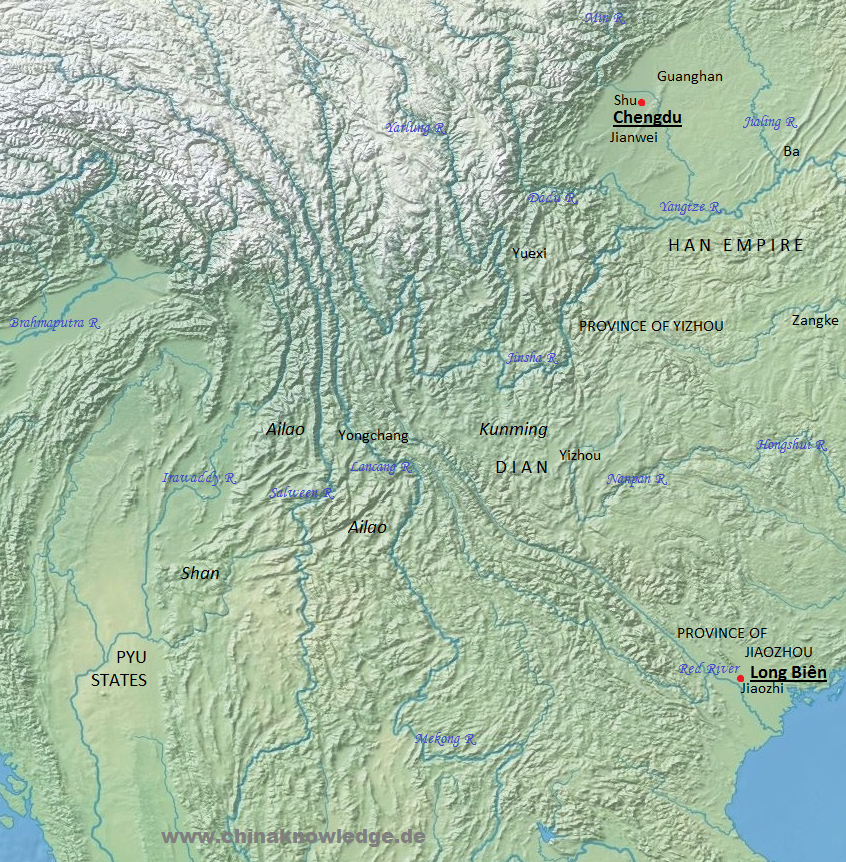The Ailao 哀牢 were a non-Chinese people that lived in the region of the modern province of Yunnan west of the upper course of the River Lancang 瀾滄江 (Mekong) during the Han period 漢 (206 BCE-220 CE). The region is today inhabited by the national minorities of the Dai 傣族 and Jingpo 景頗族. During the Han period they belonged to the so-called "Southwestern Yi Barbarians" (Xinan yi 西南夷).
Ailao was actually the name of a tribal head. His people lived of agriculture and produced textiles of silk, hemp, wool and probably cotton. The region also produced ores of copper, iron, lead, tin, gold, as well as a lot of jewels and pearls. Ailao was a region to be passed when travelling to the kingdoms of Shan 撣 (modern Myanmar) and Shendu 身毒 (India). During the Former Han period 前漢 (206 BCE-8 CE) the Chinese set up the districts (xian 縣) of Suitang 巂唐 (modern Baoshan 保山) and Buwei 不韋 (modern Fangdian 放甸).
 |
Southwest China and its surroundings between c. 200 BCE and 200 CE. Based on Tan Qixiang 譚其驤, ed. (1995), Zhongguo lishi ditu ji 中國歷史地圖集, Vol. 2, Qin, Xihan, Donghan shiqi 秦西漢東漢時期 (Beijing: Zhongguo ditu chubanshe, 1996). Tribes in italics, commanderies in normal letters. |
In 47 CE the chieftain Xianli 賢栗 attacked the tribe of the Luduo 鹿茤 and defeated them. He then asked the court of the Later Han dynasty 後漢 (25-220 CE) to be appointed governor (taishou 太守) of the commandery of Yuesui 越巂. In 67 CE the province of Yizhou 益州 (modern Sichuan and Yunnan) was further divided into the districts of Yunnan 雲南 (modern Xiangyun 祥雲), Dieyu 楪榆 (modern Dali 大理), Bisu 比蘇 (modern Yunlong 雲龍 and Lanping 蘭坪) and Xielong 邪龍 (modern Weishan 巍山 and Yangbi 漾濞). Two years later King Liumao 柳貌 sent his son to pay hommage to the Han court, so that Emperor Ming 漢明帝 (r. 57-75) allowed the establishing of the districts of Ailao (modern Tengchong 騰沖, Longling 龍陵 and Dehong 德宏) and Bonan 博南 (modern Yongping 永平) that were united in the commandery of Yongchang 永昌.
The native rulers were so gradually incorporated into the administrative structure of the Han empire, and at the same time a slow colonisation of the southwest by Chinese settlers began. In the following decades there were several conflicts between the kings of the Ailao and the governors of the commanderies in the region. The name Ailao disappeared in the late 3rd century CE.